When Irving Berlin wrote the now immortal lines, “I’m dreaming of a white Christmas, just like the ones we used to know” he was pining for colder weather for he was staying in California (or Arizona, for both states lay claim to the fact). The original version of the song actually began with a complaint about warmer climes: “The sun is shining, the grass is green, the orange and palm trees sway…” How, as a child I could relate to that – well almost.
My childhood home was not in the Cotswold Hills but at the foot of the Chiltern Hills, along the banks of the River Thames which thirty or so odd miles downstream flows through London on its way to the sea. The microclimate of the river meant our village had a much milder climate than the higher villages just a few miles away. Although nowhere near warm enough for oranges and palms to survive we very rarely had any snow at all. The village wasn’t renowned (or so it seemed as a child) for its sunshine either and the grass remained obstinately green all year round. Searching through old photos, I can only find one where our garden had turned wintry white and that was only a heavy frost. The winter of 1963 where we had to push a car through a small snowdrift was such a rare event that it is still talked about some 56 years later.

When the time came to leave home and buy my own house, I moved to the far side of the Chilterns where snow was more common. Within a couple of months of my arrival, I had to learn to master wintry driving conditions that a Canadian or American driver would barely think twice about. For in the UK an inch or two of snow causes major panic, road closures and travel disruption.

Fast forward to 2001 and my move to the Cotswolds. Until then, I had to go for my snowy ‘fix’ overseas to Norway, Switzerland, Austria or Canada. Never a great sportsman it seemed rather bizarre that I had hit upon a sport – Langlaufen or cross-country skiing – that not only did I love and turned out to be rather good at but one that I couldn’t practice easily in my home country. However, the Cotswolds are far snowier than anywhere else I have resided and in 2010 I actually manged to ‘live the dream’ by skiing from the back door of my home and along the secret valley.

Living the dream in Norway
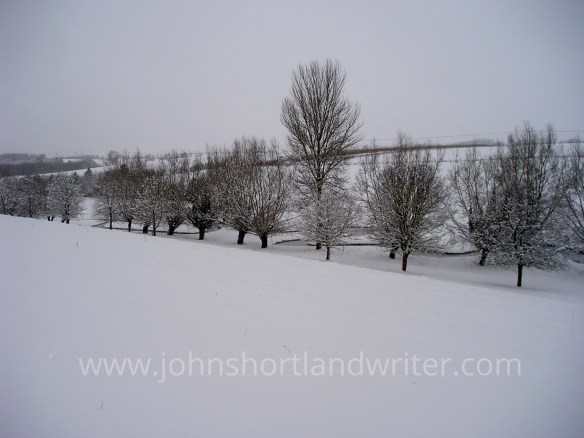
Snow in the secret valley
So why am I, like poor old Bing Crosby, singing that same old dirge? Is it because snow here rarely falls before Christmas and quite often doesn’t fall at all? The only white Christmas I have photographic record of (and I can’t remember any other) is of 2017 and even then, by Christmas Day nearly all of it had melted.

Just occasionally, the snow does finally fall deep and crisp and even. When it does, much of Britain hibernates, nervous of venturing out. However, we still have horses and other animals to feed and tend to. And when I’m out in the four-wheel drive I feel rather satisfied that I have mastered the elements, satisfied in a smug way that only the English would understand for those used to snowier climes would wonder what all the fuss is about.

Driving to the horses
Christmas 2019 is proving to be mild and green yet again. It has been a bizarre year weather-wise for we have had the wettest autumn on record and the fields surrounding our cottage are under water once again where the little winding river has burst its banks. In Australia, bush fires are burning out-of-control under fierce, all-stifling temperatures. Friends in America have already had to cope with exceptional winter weather. Perhaps I should, rather than have a little moan about the lack of a white Christmas, be thankful that I live in a country where extremes of weather are unheard of. On the other hand (and trying not to sound to whiny), it would be nice if we could have…

Floods rather than snow for us this year 😦
Wishing you all a very peaceful, safe and happy Christmas – and may the weather be kind to you. John.

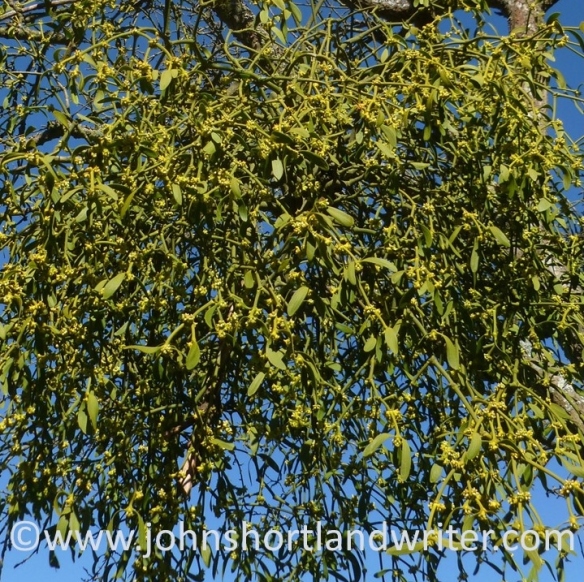

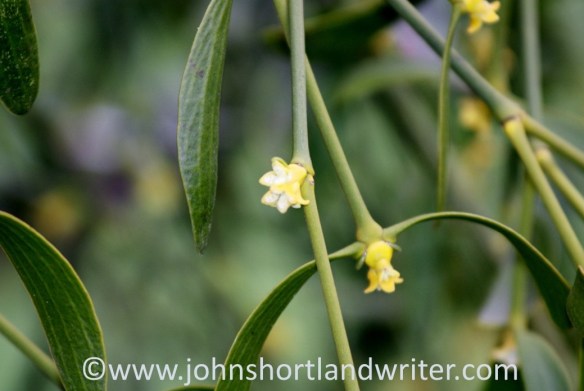

































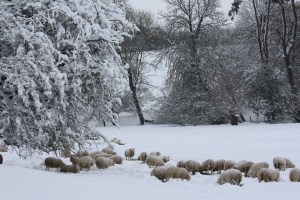

 .
.

 .
.
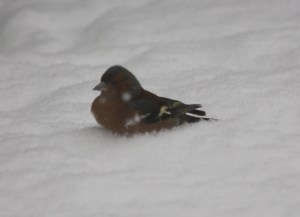

 .
.  .
. 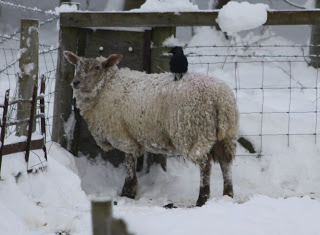 .
.
 But for a short time, at least, the ski trails start from my door. And suddenly the valley appears transformed. Perhaps it is due to the mesmeric sound of the skis swishing their way along but the scenery is seen in quite a different way. And the silence is more noticeable too – all is still and quiet apart from the tinkling of water and ice.
But for a short time, at least, the ski trails start from my door. And suddenly the valley appears transformed. Perhaps it is due to the mesmeric sound of the skis swishing their way along but the scenery is seen in quite a different way. And the silence is more noticeable too – all is still and quiet apart from the tinkling of water and ice. Until you reach the mill race where the water thunders down leaving mini icicles clinging all along the splashed and steep banks. It seems a far cry now from when, on hot days, we dam the water’s exit to raise its level, and swim in the torrent. A jacuzzi spectacular! Oddly enough, the water is warmest where the water crashes down upon you which is invigorating, to say the least.
Until you reach the mill race where the water thunders down leaving mini icicles clinging all along the splashed and steep banks. It seems a far cry now from when, on hot days, we dam the water’s exit to raise its level, and swim in the torrent. A jacuzzi spectacular! Oddly enough, the water is warmest where the water crashes down upon you which is invigorating, to say the least.  Onwards to tranquility again and the split willow – my favourite tree in the secret valley and featured in an early post,
Onwards to tranquility again and the split willow – my favourite tree in the secret valley and featured in an early post, 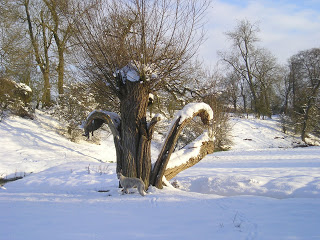
 Home exhausted, but more aware of my surroundings, I notice that even everyday items, such as our rather boring garden furniture, look more interesting when covered in snow. And we have icicles too – haven’t seen those in years!
Home exhausted, but more aware of my surroundings, I notice that even everyday items, such as our rather boring garden furniture, look more interesting when covered in snow. And we have icicles too – haven’t seen those in years!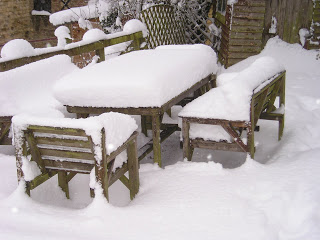


 Well, it’s almost a white Christmas!
Well, it’s almost a white Christmas!